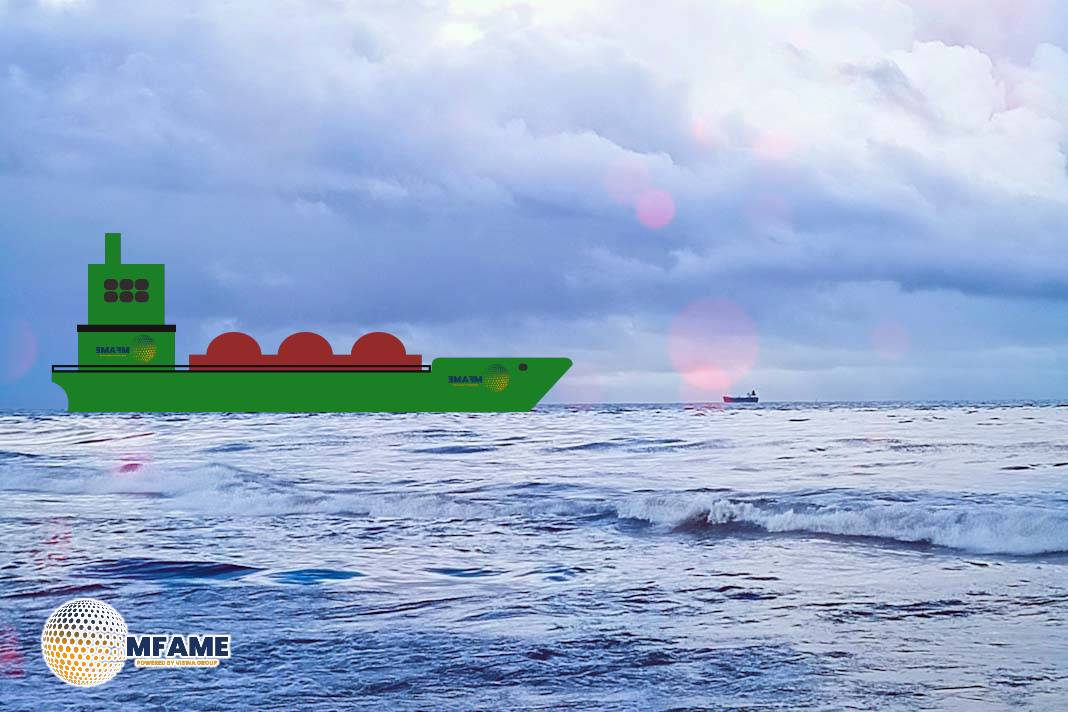- IMO Targets Net Zero Shipping by 2050, Nuclear Among Key Solutions.
- Alternative Fuels and Nuclear Power Under Scrutiny in Maritime Shift.
- NuProShip and SMRs Highlight Nuclear Potential in Decarbonising Shipping.
The International Maritime Organisation (IMO) has set an ambitious goal for international shipping: to reach net-zero emissions by 2050. As a stepping stone, the IMO is targeting at least a 20% reduction in greenhouse gas (GHG) emissions by 2030. These objectives are part of a broader global strategy aimed at decarbonising the shipping industry, reports AXA XL.
EU Regulations Drive Significant GHG Reductions
The FuelEU Maritime Regulation, which applies to ships transporting cargo or passengers within the EU/EEA, requires a 2% reduction in GHG emission intensity by 2025, with a gradual increase to 80% by 2050. This regulation affects vessels over 5,000 gross tonnage and adopts a ‘well to wake’ approach, which considers emissions throughout the entire lifecycle of fuel usage.
Investigating Decarbonization Technologies
Ship owners and managers are actively looking into various technologies to meet their emission-reduction goals. These technologies include wind propulsion, innovative rudder and propeller designs, and exhaust gas scrubbers. However, the development of new fuel and propulsion systems is viewed as crucial for achieving long-term advancements.
Key Considerations in Fuel Selection
The choice of which solutions to implement will hinge on factors such as the age and type of the vessel, trading routes, access to financing, and evolving regulatory landscapes.
Complexities Around Ammonia and Hydrogen
While fuels like ammonia and hydrogen are promising, they present several challenges:
- Toxicity (e.g., ammonia)
- Storage complexity
- Infrastructure gaps at ports
- Cost unpredictability
- Retrofitting vs. new builds
A Multi-Fuel Future
Even with the challenges ahead, shipowners are gearing up for a future where multiple fuels will be the norm. A recent survey conducted by the Global Centre for Maritime Decarbonization, Global Maritime Forum, Maersk-McKinney Moller Centre for Zero Carbon Shipping, and McKinsey revealed that many anticipate using two or more types of fuel by 2030.
Existing Applications and New Technology
Nuclear propulsion is already in play with icebreakers and naval submarines. Newer options like Small Modular Reactors (SMRs) are designed to operate at lower pressures, enhancing safety compared to the traditional high-pressure reactors.
Historical Lessons and Current Projects
The NS Savannah, weighing in at 22,000 tonnes, was the first nuclear merchant ship but was taken out of service in 1970 due to its steep operating costs. Fast forward to January 2025, and we see the launch of the NuProShip project, which is exploring the potential of Generation IV SMRs for commercial shipping.
Need for Updated Frameworks
According to VARD, a Norwegian shipbuilder, insurance companies will be stepping into the project’s second phase to evaluate the business feasibility of nuclear propulsion in the shipping industry.
The push for nuclear power on a larger scale really highlights the need for clear global regulations around safety, maintenance, and decommissioning. While the UK has its Merchant Shipping (Nuclear Ships) Regulations from 2022 to guide us domestically, the 1962 Brussels Convention on Nuclear Ship Liability has yet to be put into action.
Training and Human Capital
The introduction of new fuels, particularly nuclear energy, calls for advanced training for seafarers. The specialised skills needed to operate nuclear-powered vessels will require updated certification and education programs.
A Cross-sectoral conversation
Nuclear propulsion has the potential to significantly help the maritime industry achieve net-zero emissions. However, there are still some major hurdles to overcome, such as its commercial viability, regulatory clarity, and insurability. Tackling these challenges will require a united effort from shipowners, insurers, regulators, engineers, and governments around the globe.
Did you subscribe to our daily Newsletter?
It’s Free Click here to Subscribe!
Source: AXA XL

















